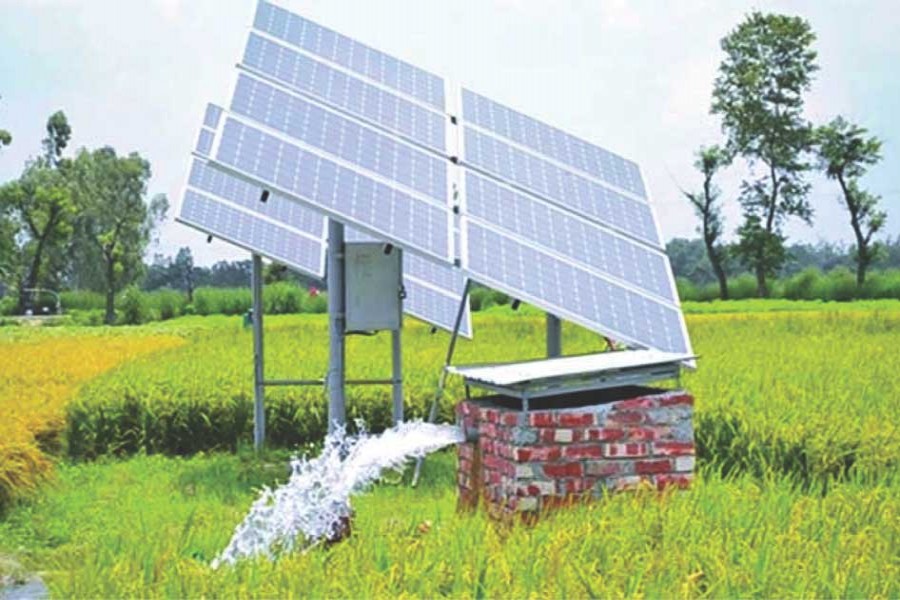As signatories to the Paris Agreement, Central Asia's fossil fuel rich countries have all committed to reduce emissions. Solar power is a natural alternative but the challenges are numerous.
Solar power's first criticism as being expensive is no longer there. Cheap solar power has destroyed the traditional mindsets of many system planners. Solar power is ubiquitous, and it is cheaper than a new coal power plant in almost all countries.
The second criticism of solar power is that it is not a reliable power source, as our day's sun can't bring light into the night or when the sun is covered in clouds. This criticism is also slowly coming to an end with cheaper energy storage or battery technologies.
In the past, fossil fuel rich energy countries in Central Asia often did not know or care about climate change.
Today Uzbekistan holds the record in solar price auctions in the region and climate change actions are big agenda items. Countries understand the nature of fossil fuels-82 per cent of today's coal, 49 per cent of gas, and 33 per cent oil must remain underground if we want to meet the 2°C target. Where are these reserves? More than 50 per cent of these fossil fuel reserves are in ex-Soviet republics and a significant number are in Central Asian countries.
Today, fossil fuel-rich countries need technical support to diversify from fossil fuels. These industries employ a large part of the population, and they are a significant part of the country's GDP. Technology leapfrogging is essential for these countries, and they are keen to invest in tomorrow's technology today to minimize the risk of stranded assets.
Turkmenistan, the 12th largest natural gas producer in the world, and the 10th biggest oil producer in Asia and the Pacific, is sitting on this dilemma. The government plans to diversify the economy from single energy source-gas-and meet their Paris commitment.
We are working with the Turkmenistan government on a new concept through technical assistance and other support that has not been tried anywhere in Asia. The idea is to introduce solar power-generated steam in a gas fired power station and allow the turbine to use both solar and gas-powered steam based on availability to generate electricity.
Concentrated solar power is an approach to generating electricity in which mirrors are used to reflect, concentrate, and focus sunlight onto a specific point. This generates heat (thermal energy), which is then used to generate steam, which in turn runs the turbine to generate electricity.
The proposed technology - integrated solar combined cycle systems - will use solar thermal energy to generate steam, which will drive turbines that were originally using gas generated steam only. The system will also include molten salt to store thermal energy, unlike batteries that store electricity generated by using solar panels.
Today it is common to store solar energy as electricity (solar panel plus batteries) or thermal energy (concentrated solar power with molten salt storage). Solar thermal power costs have also decreased significantly, in the last decade, making it a viable alternative to supplement gas generated steam. The integration of storage (molten salt) allows storage of part of the daytime production for use in the peak night hours.
Today many projects use a battery energy storage system with 1 to 4 hours of storage capacity to stabilize the variable output from solar panels during the day and shift this power to night-time for about 5-10 cents per kWh. Battery plus solar panel are most suitable option for storing electricity for 1 to 4 hours.
For concentrated solar power technology, using molten salt in large tanks as a storage of thermal energy for generating steam later, the cost of the thermal storage is only about 2- cents per kWh equivalent, which can be substantially lower than batteries for large installations. Concentrated solar power solutions are more flexible in responding to the needs of the grid. Under high solar radiation conditions, like Turkmenistan, the concentrated solar power may be able to generate electricity at costs below 5-6 cents per kWh. Our technical experts are considering a design to operate primarily at night, with more than 9 to10 hours of storage. Overall, this will introduce increase flexibility and dispatchability of solar power.
Turkmenistan has vast land mass and technically could be the power source for the entire central Asian region with power from solar not just from gas-a small step for Turkmenistan but a giant leap towards decarbonisation of the power sector of Central Asia.
The piece is excerpted from Asian Development Blog


